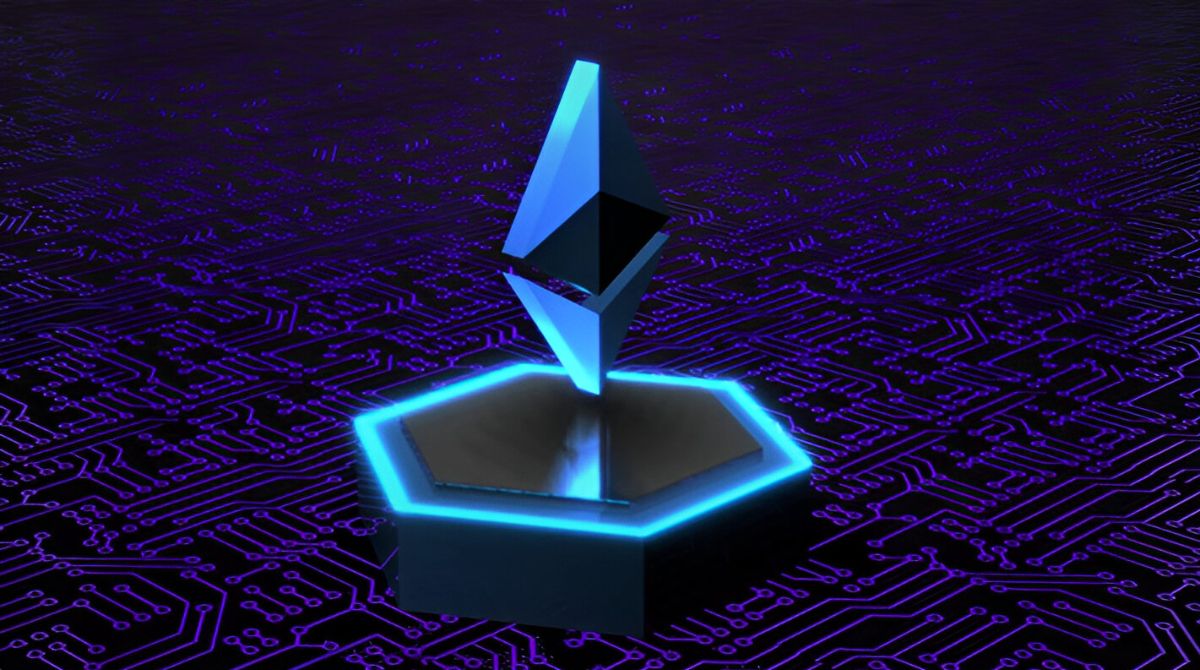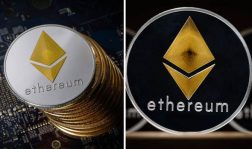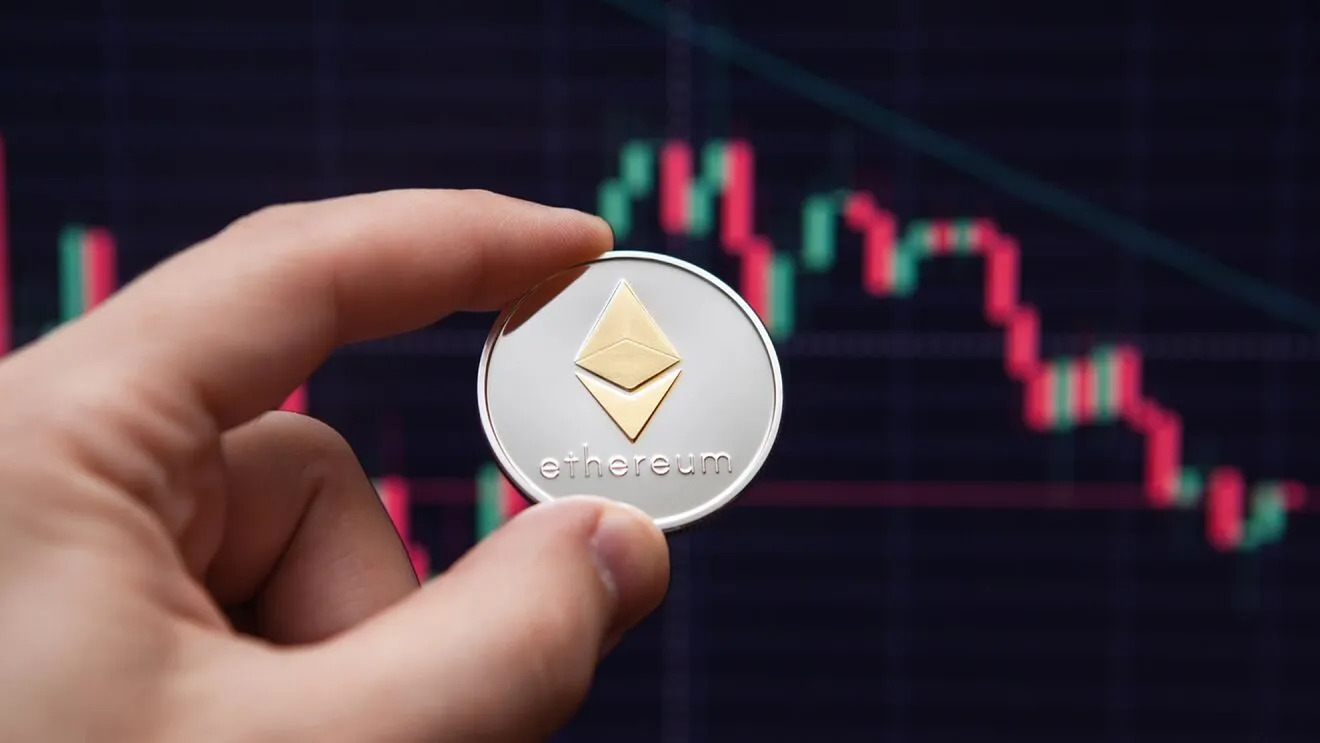Introduction
Welcome to the world of Ethereum, an open-source blockchain platform that has revolutionized the way we think about digital currencies and decentralized applications. In recent years, Ethereum has gained immense popularity and become a powerhouse in the crypto arena. People from all walks of life are now looking for opportunities to make money with Ethereum.
But what exactly is Ethereum? How does it work? And how can you tap into its potential to generate income? In this article, we will explore various ways to make money with Ethereum, be it through investing, mining, or participating in decentralized finance (DeFi) platforms.
Ethereum is not just a cryptocurrency like Bitcoin; it is a platform that enables developers to build and deploy smart contracts and decentralized applications (DApps). These DApps run on a network of computers called nodes, which are spread around the world and ensure the security and integrity of the Ethereum network.
Unlike traditional applications that are owned and controlled by centralized entities, DApps on Ethereum operate in a trustless manner, meaning they don’t require intermediaries and rely on the consensus of the network to function. This decentralization aspect of Ethereum opens up numerous possibilities for earning money.
Whether you are an experienced cryptocurrency enthusiast or a beginner looking to dip your toes into the world of Ethereum, there are several ways you can make money with this innovative blockchain platform. In the following sections, we will explore the various avenues available to you, such as buying and selling Ethereum, mining, participating in initial coin offerings (ICOs), staking, and even building and selling your own DApps.
However, it’s important to note that, like any investment or entrepreneurial endeavor, making money with Ethereum comes with its fair share of risks and challenges. It’s important to approach each opportunity with caution, do thorough research, and only invest what you can afford to lose.
So, if you’re ready to embark on this journey and unlock the potential of Ethereum, let’s dive into the different ways you can start making money with this groundbreaking blockchain platform.
What is Ethereum?
Ethereum is a blockchain platform that was created by the talented programmer Vitalik Buterin in 2015. It’s a decentralized, open-source protocol that enables developers to build and deploy smart contracts and decentralized applications (DApps) on its network. While Bitcoin paved the way for digital currencies, Ethereum took the concept further by introducing the idea of programmable money.
Ethereum operates on its own cryptocurrency called Ether (ETH), which is used to facilitate transactions and incentivize participants on the network. However, Ethereum is not just a cryptocurrency; it’s a platform that empowers developers to build their own decentralized applications without the need for intermediaries. This allows for the creation of innovative and transparent applications that can disrupt various industries.
At its core, Ethereum introduces the concept of smart contracts, which are self-executing agreements written in code. These contracts automatically execute the terms and conditions defined within them once certain predefined conditions are met. Smart contracts enable secure and transparent transactions without the need for intermediaries, eliminating the need for trust between parties.
Ethereum’s blockchain technology is unique because it is Turing complete, meaning it can execute any code as long as the requester is willing to pay for the computational resources required. This versatility enables developers to create complex applications that were previously unimaginable within the blockchain space.
The decentralized nature of Ethereum makes it resistant to censorship and tampering. The network consists of thousands of nodes spread globally, ensuring that no single party has control over the platform. This makes Ethereum highly secure and provides users with confidence in the integrity of their transactions and data.
Ethereum’s widespread adoption and popularity have positioned it as the second-largest cryptocurrency by market capitalization, right after Bitcoin. Its technology has gained the attention of both individuals and enterprises, leading to the development of a vibrant and innovative ecosystem around the Ethereum platform.
Overall, Ethereum is not just a cryptocurrency; it is a powerful platform that enables the creation of decentralized applications, fuelled by the programmable money of Ether. The impact of Ethereum goes beyond its cryptocurrency value, as it opens up endless possibilities for a more transparent, secure, and efficient digital future.
How Does Ethereum Work?
Ethereum operates on a decentralized blockchain network, which means it is not controlled by any central authority. Instead, it relies on a network of computers (nodes) spread around the world to maintain the network’s security and integrity. These nodes work together to verify and validate every transaction and smart contract executed on the Ethereum network.
At the heart of Ethereum’s functionality are smart contracts. These are self-executing agreements written in code that automatically execute transactions and agreements according to predefined conditions. Smart contracts enable developers to create decentralized applications (DApps) that run on the Ethereum blockchain, providing a secure and transparent framework for various applications.
When a user interacts with a DApp on Ethereum, they send a transaction to the network. This transaction includes the necessary information, such as the recipient address, the amount of Ether being sent, and any additional data required by the DApp. The transaction is then broadcasted to all the nodes in the network.
The nodes validate the transaction by checking its legitimacy and ensuring that the sender has enough Ether to complete the transaction. Once the transaction is validated, it is grouped with other transactions to form a block.
Ethereum uses a consensus algorithm called Proof of Stake (PoS) to validate and add blocks to the blockchain. In a PoS system, validators (also known as “stakers”) are chosen to create and validate blocks based on the number of Ether they hold and are willing to “stake” as collateral. This consensus mechanism is more energy-efficient compared to the Proof of Work (PoW) algorithm used by Bitcoin, as it doesn’t require extensive computational power.
After a block is added to the blockchain, the details of the transactions within that block are permanently recorded and become part of the Ethereum ledger. This transparent and decentralized structure ensures that transactions cannot be altered or tampered with, providing a high level of trust and security in the system.
Additionally, Ethereum allows developers to create and deploy their own tokens on its blockchain. These tokens, known as ERC-20 tokens, can represent various assets such as digital currencies, loyalty points, or even ownership rights. This further expands the functionality and possibilities of Ethereum, enabling a wide range of decentralized applications and innovations.
Overall, Ethereum’s blockchain technology, powered by smart contracts and a decentralized network of nodes, provides a secure and transparent platform for executing transactions and building decentralized applications. Its innovative approach has revolutionized the way we think about programmable money and has opened up a world of possibilities for developers and users alike.
Getting Started with Ethereum
If you’re interested in diving into the world of Ethereum and exploring its potential for making money, here’s how you can get started:
1. Set up a Wallet: The first step is to set up a digital wallet where you can securely store your Ether (ETH) and other ERC-20 tokens. There are various types of wallets available, including online wallets, hardware wallets, and software wallets. Research and choose a wallet that aligns with your security preferences and needs.
2. Buy Ether: Once you have a wallet, you can buy Ether from various cryptocurrency exchanges. These exchanges allow you to exchange fiat currency (such as USD or EUR) for Ether. Popular exchanges include Coinbase, Binance, and Kraken. Remember to do your research, compare exchange rates, and choose a reputable and secure exchange.
3. Secure your Wallet: It’s crucial to protect your wallet and the private keys associated with it. Enable two-factor authentication (2FA) whenever possible and consider using a hardware wallet for added security. Be cautious of phishing attempts and ensure you are visiting legitimate websites when accessing your wallet.
4. Learn about DApps: Familiarize yourself with decentralized applications (DApps) built on the Ethereum platform. Explore different DApps, ranging from decentralized finance (DeFi) platforms to gaming and social media applications. This will help you understand the potential use cases and opportunities in the Ethereum ecosystem.
5. Participate in ICOs: Initial Coin Offerings (ICOs) are crowdfunding events in which new projects sell their tokens in exchange for Ether. Research ICO projects and consider participating in ones that align with your interests and have strong potential for success. However, exercise caution and conduct thorough due diligence before investing in any ICO.
6. Explore Ethereum Mining: Mining Ethereum involves using powerful computer hardware to solve complex mathematical problems to validate transactions and secure the network. This process rewards miners with newly minted Ether. However, mining Ethereum requires significant computational power and energy consumption, so it may not be feasible for everyone.
7. Participate in Staking and DeFi: Ethereum 2.0 introduces a new consensus mechanism called Proof of Stake (PoS), allowing users to stake their Ether and earn passive income by helping to secure the network. Additionally, decentralized finance (DeFi) platforms on Ethereum offer various opportunities to earn interest on your crypto holdings through lending, borrowing, and liquidity provision.
8. Learn Solidity: If you have programming skills, consider learning Solidity, the programming language used to develop smart contracts on Ethereum. Building your own DApps and smart contracts can provide opportunities for monetization if you create useful and innovative applications.
9. Stay Informed: As the Ethereum ecosystem is constantly evolving, it’s essential to stay updated with the latest news, trends, and market developments. Follow reputable cryptocurrency news sources, join online communities, and engage in discussions to expand your knowledge and remain informed about potential investment opportunities.
Remember, while Ethereum provides exciting opportunities for making money, it’s crucial to approach each opportunity with caution and conduct thorough research. Investing in cryptocurrencies and participating in blockchain projects involve inherent risks, so only invest what you can afford to lose.
By following these steps and continuously learning about Ethereum, you can start your journey into the world of decentralized finance and explore the potential for generating income in the exciting and ever-expanding Ethereum ecosystem.
Buying and Selling Ether
Buying and selling Ether (ETH), the native cryptocurrency of the Ethereum blockchain, is one of the most common and straightforward ways to participate in the Ethereum ecosystem and potentially make money. Here are the key steps to buying and selling Ether:
1. Choose a Reliable Exchange: Select a reputable cryptocurrency exchange that supports Ethereum. Some popular exchanges include Coinbase, Binance, Kraken, and Gemini. Ensure that the exchange you choose operates in your country and has a user-friendly interface.
2. Open an Account: Sign up for an account on the chosen exchange. Provide the necessary personal information and complete any verification procedures required by the platform, such as providing identification documents.
3. Secure Your Account: Implement strong security measures to protect your exchange account. Enable two-factor authentication (2FA) using an authenticator app for an extra layer of security. Additionally, consider using a hardware wallet to store your Ether securely.
4. Deposit Funds: Once your account is set up, deposit funds into your exchange account. This can be done through various methods, such as bank transfers, credit/debit cards, or other cryptocurrencies, depending on the options offered by the exchange.
5. Place a Buy Order: With funds in your exchange account, navigate to the Ethereum trading pair and place a buy order. Specify the amount of Ether you want to purchase and at what price. You can opt for market orders, which execute at the current market price, or limit orders, which allow you to set a specific price at which you want to buy.
6. Safely Store Your Ether: After your purchase is complete, transfer your Ether from the exchange to your personal wallet. It is highly recommended to store your Ether in a secure wallet that you control, rather than leaving them on the exchange. This ensures that you have full control over your funds.
7. Monitor the Market: Keep an eye on the Ethereum market trends and prices. You can use cryptocurrency tracking websites, trading platforms, or mobile apps to stay updated with real-time market data. This will help you make informed decisions about when to buy or sell Ether.
8. Decide When to Sell: When you’re ready to sell your Ether and realize profits, navigate back to the exchange and place a sell order. Specify the amount you want to sell and at what price. Again, you can choose between market orders or limit orders to set your desired selling price.
9. Withdraw Your Funds: Once your sell order is executed, withdraw the proceeds from the exchange to your bank account or desired payment method. This allows you to convert your Ether back into your desired fiat currency.
10. Stay Informed and Adapt: As the cryptocurrency market is highly volatile, it’s essential to stay updated with the latest news and market trends. This will help you make informed decisions about when to buy or sell Ether based on market conditions.
Remember, the price of Ether can fluctuate significantly, and investing in cryptocurrencies involves risks. It’s important to do your own research, understand the market dynamics, and only invest what you can afford to lose.
Buying and selling Ether is a common entry point into the Ethereum ecosystem and can provide opportunities for making money. By following these steps and staying informed about the market, you can navigate the world of buying and selling Ether and potentially capitalize on the growth of the Ethereum blockchain.
Making Money with Ethereum Mining
Ethereum mining is the process of validating transactions and adding them to the Ethereum blockchain. Miners use powerful computer hardware to solve complex mathematical problems, and in return, they earn Ether (ETH) as a reward. Here’s how you can make money with Ethereum mining:
1. Understand the Mining Process: Ethereum mining involves solving complex mathematical problems using computational power. This is done to validate and verify transactions on the Ethereum network. Miners compete against each other to find the correct solution, and the first miner to solve the problem gets to add a new block to the blockchain and receive Ethereum as a reward.
2. Set Up a Mining Rig: To start mining Ethereum, you’ll need a specialized mining rig. This typically consists of powerful graphics processing units (GPUs) or application-specific integrated circuits (ASICs). The rig should be capable of handling the computational requirements of mining Ethereum efficiently.
3. Choose Mining Software: Select the appropriate mining software that is compatible with your mining rig. Ethereum mining software such as Claymore, PhoenixMiner, or Ethminer can be used to connect your mining rig to the Ethereum network and start mining.
4. Join a Mining Pool: Joining a mining pool can increase your chances of earning Ether consistently. Mining pools involve combining computational power with other miners to collectively solve the mathematical problems and share the rewards. This way, even if your mining rig isn’t the first to solve a problem, you still earn a portion of the reward.
5. Calculate Costs and Profits: Consider the costs involved in mining, such as electricity consumption, mining hardware, cooling, and maintenance costs. Calculate your estimated profits by factoring in the current Ethereum price, mining difficulty, mining pool fees, and your mining rig’s hash rate.
6. Stay Up to Date: As Ethereum moves toward Ethereum 2.0 and the transition to a Proof of Stake (PoS) system, mining will gradually become less relevant. Stay informed about the latest updates and developments in the Ethereum ecosystem to adapt your mining strategy accordingly.
7. Consider Cloud Mining: If setting up and maintaining a mining rig is not feasible for you, you can explore cloud mining services. Cloud mining allows you to rent mining power from a provider who takes care of the technical aspects and infrastructure while you earn a share of the rewards. However, be cautious when selecting a cloud mining service, as some providers may be unreliable.
8. Control Risks and Monitor Profitability: Mining profitability can vary over time due to factors such as the Ethereum price, mining difficulty, and network congestion. Regularly monitor your mining operation’s profitability and adjust your strategy accordingly. Be cautious of market fluctuations and potential risks associated with hardware failures, regulatory changes, or network upgrades.
9. Consider Energy Efficiency: Energy consumption is a significant cost factor in Ethereum mining. Optimize your mining operation for energy efficiency by choosing energy-efficient mining rig components, maximizing cooling efficiency, and exploring renewable energy options to reduce environmental impact and operational costs.
It’s essential to note that Ethereum mining requires a significant upfront investment in mining hardware and ongoing operational costs. Additionally, as Ethereum moves towards a PoS system, mining rewards will gradually decrease. Assess your resources, technical skills, and willingness to take risks before embarking on an Ethereum mining venture.
Mining Ethereum can be a lucrative opportunity, especially when done efficiently and strategically. By understanding the mining process, staying informed, managing costs, and adapting to changes in the Ethereum ecosystem, you can potentially generate income through Ethereum mining.
Participating in ICOs
Participating in Initial Coin Offerings (ICOs) can be an exciting way to get involved in the Ethereum ecosystem and potentially make money. ICOs are crowdfunding events in which new blockchain projects sell tokens in exchange for Ethereum (ETH) or other cryptocurrencies. Here’s a guide on how to participate in ICOs:
1. Research and Due Diligence: Thoroughly research the ICO projects you are interested in. Read their whitepaper, examine their team’s expertise, explore their roadmap and goals, and assess the potential of their project. Look for transparency and a clear value proposition that solves real-world problems.
2. Understand Tokenomics: Familiarize yourself with the tokenomics of the ICO project. Learn about the total token supply, the allocation for the public sale, and any lock-up or vesting schedules for team and advisor tokens. Evaluate how the token will be used within the project’s ecosystem and its potential for future demand.
3. Set Up a Wallet: Ensure you have a suitable Ethereum wallet to receive the tokens you will purchase during the ICO. Choose a wallet that supports ERC-20 tokens, as most ICOs are built on the Ethereum blockchain and follow the ERC-20 standard.
4. Prepare Your Ethereum: Make sure you have enough Ethereum (ETH) in your wallet to participate in the ICO. ICOs usually require a minimum contribution in ETH to purchase their tokens. Verify the details of the ICO’s token sale, including the dates, token price, and any participation caps or restrictions.
5. Follow Whitelisting/KYC Process: Some ICOs require participants to go through a whitelisting or Know Your Customer (KYC) process. This involves submitting personal information and verifying your identity. Take note of the ICO’s deadlines and any specific requirements for participating.
6. Participate in the ICO: Once the ICO opens, follow the instructions provided by the project to contribute your ETH and purchase tokens. This typically involves sending your Ethereum to a specific address provided by the project or using a smart contract to participate.
7. Secure Your Tokens: After participating in the ICO and receiving your tokens, transfer them to a secure wallet that you control, rather than leaving them on the exchange or within the ICO platform. This ensures you have full control over your tokens and reduces the risk of losing them to hacks or security breaches.
8. Monitor Project Progress: Stay updated with the progress of the ICO project. Follow the project’s announcements, join their official communication channels like Telegram or Discord, and keep an eye on the project’s roadmap and development updates.
9. Assess Trading Opportunities: After the ICO completes and the tokens become tradable, you can assess market conditions and consider trading or holding the tokens based on your investment strategy. Watch out for potential listings on cryptocurrency exchanges, as this can lead to increased liquidity and trading opportunities.
10. Understand Risks: Participating in ICOs comes with risks. The cryptocurrency market is volatile, and ICOs can be highly speculative in nature. Factors such as project failure, regulatory changes, or market downturns can impact the value of ICO tokens. Only invest what you can afford to lose and remember to diversify your investments.
Participating in ICOs can be an exciting way to support innovative projects and potentially earn profits. However, it’s essential to conduct thorough research, assess risks, and make informed decisions when participating in ICOs to maximize your chances of success.
Ethereum Staking and DeFi
As the Ethereum ecosystem continues to evolve, new opportunities for making money have emerged. Ethereum staking and decentralized finance (DeFi) have gained significant traction and offer exciting prospects for individuals looking to earn passive income and participate in a decentralized financial system. Here’s an overview of Ethereum staking and DeFi:
Ethereum Staking: Ethereum 2.0 is a major upgrade to the Ethereum blockchain that will transition the network from a Proof of Work (PoW) consensus mechanism to Proof of Stake (PoS). Ethereum staking involves holding and “staking” Ether (ETH) in a specialized wallet to support the security and operation of the network. In return for staking ETH, participants earn staking rewards. Staking provides an opportunity for individuals to earn a passive income by contributing to the network’s security, even without running a mining rig.
DeFi: Decentralized Finance (DeFi) refers to a range of financial applications built on blockchain networks, including Ethereum. DeFi aims to create an open and permissionless financial system that allows users to transact, lend, borrow, and earn interest without intermediaries like banks. DeFi applications are typically built on smart contracts, providing transparency, security, and automation. Participants in DeFi can utilize their Ethereum assets in various ways, such as lending on decentralized lending platforms, providing liquidity on decentralized exchanges, or yield farming by staking tokens to earn rewards.
Lending and Borrowing: DeFi platforms offer lending and borrowing services where users can lend their Ethereum or other cryptocurrencies to borrowers and earn interest on their lending capital. Conversely, borrowers can use their Ethereum as collateral to borrow funds. These platforms use smart contracts to automate loan agreements, collateralization, and interest payments. Lending and borrowing in DeFi provide opportunities for individuals to earn interest on their Ethereum holdings or access capital without traditional financial institutions.
Liquidity Provision: Many decentralized exchanges (DEXs) rely on liquidity providers to ensure smooth trading and adequate market depth. Liquidity providers lock their Ethereum or other cryptocurrencies into smart contracts called liquidity pools. In return, they earn fees generated from trades executed on the DEX. By providing liquidity, individuals can earn a share of the trading fees and potentially benefit from price fluctuations.
Yield Farming: Yield farming involves strategically allocating assets to maximize returns in the DeFi ecosystem. Participants lend, stake, or deposit their Ethereum or other tokens into various DeFi protocols to earn rewards, typically in the form of additional tokens. Yield farming strategies can be complex and involve monitoring different protocols’ yields and adjusting asset allocations accordingly. By actively managing their assets, individuals can potentially earn higher returns in the DeFi space.
Risks and Considerations: Ethereum staking and DeFi offer promising opportunities, but it’s important to be aware of the associated risks. DeFi platforms may involve smart contract vulnerabilities, market risks, and fluctuations in token values. Additionally, Ethereum 2.0 is still being developed, and the transition to PoS is a complex process. Participants in Ethereum staking should be mindful of the potential risks and uncertainties associated with the upgrade.
Ethereum staking and DeFi present exciting possibilities for passive income generation and participation in a decentralized financial ecosystem. By staking Ethereum or engaging with various DeFi protocols, individuals can earn interest, provide liquidity, or strategically allocate their assets to potentially maximize returns. As with any investment or financial activity, it’s crucial to do thorough research, understand the risks, and only invest what you can afford to lose.
Building and Selling Ethereum DApps
One of the most exciting prospects within the Ethereum ecosystem is the ability to build and sell decentralized applications (DApps). Ethereum provides a robust platform for developers to create innovative DApps that leverage blockchain technology. Here’s a guide on how to get started building and selling Ethereum DApps:
1. Understand Ethereum and Solidity: Familiarize yourself with Ethereum’s technology and the programming language used for developing smart contracts, Solidity. Solidity is specifically designed for writing Ethereum smart contracts and enables developers to create secure and efficient DApps.
2. Identify a Problem to Solve: Identify a problem or pain point that your DApp can effectively address. It could be anything from financial services to supply chain management to gaming. Research existing solutions and determine how your DApp can provide a unique value proposition that differentiates it from competitors.
3. Plan and Design: Outline the functionalities, features, and user interface of your DApp. Create a comprehensive plan that details the project scope, technical requirements, and anticipated timeline. Design an intuitive and user-friendly interface that enhances the user experience.
4. Write Smart Contracts: Develop the smart contracts that will power your DApp. Use Solidity to program the logic and functionality of your DApp’s smart contracts. Ensure proper security measures are in place to protect against potential vulnerabilities and code exploits.
5. Test and Deploy: Thoroughly test your smart contracts to ensure they function as intended and address potential issues or bugs. Test the DApp’s user interface and functionalities to ensure a seamless experience for the end-users. Once you’re satisfied with the testing, deploy your DApp on the Ethereum blockchain.
6. Promote Your DApp: Devise a marketing and promotion strategy to create awareness for your DApp. Leverage social media platforms, online communities, and blockchain-related websites to spread the word about your DApp. Engage with potential users, gather feedback, and continuously iterate and improve your DApp based on user experiences.
7. Monetize Your DApp: There are several ways to monetize your DApp. You can charge fees for specific transactions or services within the DApp, offer premium features or subscriptions, or integrate advertisements. Consider your target audience and competition to determine the most viable monetization model for your DApp.
8. Maintain and Update: After launching your DApp, continue to support and maintain it. Keep up with the latest updates and improvements in the Ethereum ecosystem to ensure your DApp remains compatible and optimized. Listen to user feedback and iterate on your DApp to enhance its functionality and user experience.
9. Explore Selling Opportunities: If you’re seeking to sell your DApp, you can consider various options. You can approach existing companies looking to diversify their offerings by acquiring or licensing your DApp. Alternatively, you can sell your DApp directly to interested parties who see value in your creation.
10. Protect Your Intellectual Property: Consider protecting the intellectual property associated with your DApp. Consult legal professionals to understand the potential steps you can take to safeguard your code, branding, and value proposition. This can include trademarks, patents, or proprietary licenses.
Building and selling Ethereum DApps is a dynamic and rewarding endeavor. By leveraging the power of Ethereum, you can create innovative solutions and participate in the growing decentralized application ecosystem. Through careful planning, development, and promotion, your DApp can carve its space in the Ethereum ecosystem and potentially generate revenue or attract interest from potential buyers.
Investing in Ethereum
Investing in Ethereum can be a strategic and potentially lucrative venture for those interested in cryptocurrencies and blockchain technology. Ether (ETH), the native cryptocurrency of the Ethereum network, has gained significant attention and popularity in recent years. Here’s a guide on how to invest in Ethereum:
1. Educate Yourself: Before investing in Ethereum, it’s crucial to understand the technology, its potential, and the associated risks. Familiarize yourself with the fundamentals of blockchain, smart contracts, and how Ethereum differentiates itself from other cryptocurrencies.
2. Conduct Research: Stay informed about the latest news and developments in the Ethereum ecosystem. Follow reputable sources, join online communities, and engage in discussions to understand market trends, technological advancements, and potential investment opportunities.
3. Choose a Reliable Exchange: Select a reputable cryptocurrency exchange that supports Ethereum. Consider factors such as security, user interface, trading fees, and customer support. Well-known exchanges like Coinbase, Binance, and Kraken are popular choices.
4. Set Up an Account: Sign up for an account on the chosen exchange and complete the necessary verification procedures. Provide any required identification documents to comply with regulatory requirements.
5. Secure Your Assets: Implement strong security measures to protect your Ethereum holdings. Enable two-factor authentication (2FA), use hardware wallets for cold storage, and keep your private keys secure. Be cautious of phishing attempts and ensure you are visiting legitimate websites when accessing your Ethereum wallet or exchange account.
6. Determine Your Investment Strategy: Define your investment goals and strategy for Ethereum. Consider factors such as your risk tolerance, investment timeframe, and desired level of involvement. Decide whether you want to hold Ethereum as a long-term investment or actively trade based on market trends.
7. Allocate Funds: Assess your financial situation and determine the amount of capital you are willing to invest in Ethereum. Remember to only invest what you can afford to lose, as the cryptocurrency market can be highly volatile.
8. Dollar-Cost Averaging: Consider implementing a dollar-cost averaging strategy, where you invest a fixed amount of money into Ethereum at regular intervals, regardless of its price. This approach helps mitigate the impact of short-term price fluctuations and allows you to acquire Ethereum at different price points over time.
9. Stay Informed: Continuously monitor the Ethereum market and stay updated with market news, trends, and regulatory developments. Watch for major events or upgrades happening within the Ethereum ecosystem, as they can impact the price and overall market sentiment.
10. Diversify Your Portfolio: While Ethereum holds significant potential, it’s essential to diversify your investment portfolio across different asset classes. Consider allocating funds to other cryptocurrencies, traditional investments, or other high-risk, high-reward opportunities to spread your risk and maximize potential returns.
Investing in Ethereum provides exposure to the growing world of cryptocurrencies and the potential for significant returns. However, it’s important to remember that cryptocurrency investments carry risks. Prices can be volatile, and the market is influenced by various factors, including market sentiment, regulatory changes, and technological advancements.
Make informed decisions, do thorough research, and understand the potential risks and rewards of investing in Ethereum. By staying informed, taking a strategic approach, and aligning your investments with your goals and risk tolerance, you can navigate the Ethereum investment landscape and potentially benefit from this innovative blockchain platform.
Risks and Challenges of Making Money with Ethereum
While Ethereum presents exciting opportunities for making money, it is essential to be aware of the accompanying risks and challenges. Investing or participating in Ethereum-related activities involves various potential pitfalls that investors and users should consider. Here are some of the key risks and challenges to be mindful of when making money with Ethereum:
1. Volatility: Ethereum, like other cryptocurrencies, is known for its price volatility. The value of Ether (ETH) can experience substantial fluctuations in relatively short periods. This volatility introduces both opportunities for profit and the potential for significant losses.
2. Regulatory Environment: The regulatory landscape surrounding cryptocurrencies is still evolving. Changes in regulations or government actions can impact the accessibility, viability, and legality of Ethereum-related activities. Regulatory uncertainty can create barriers or risks for investors and business operations related to Ethereum.
3. Market Adoption and Competition: Ethereum faces stiff competition from other blockchain platforms and cryptocurrencies. While it is currently one of the most widely adopted platforms, the evolving nature of the blockchain industry means that new competitors could emerge, potentially impacting Ethereum’s market position and value.
4. Technological Risks: Ethereum is a complex technology, and its ecosystem relies on various components, including smart contracts, decentralized applications (DApps), and consensus mechanisms. As such, there are risks associated with code vulnerabilities, hacking incidents, and technical failures that could lead to financial losses or reputational damage.
5. Security Breaches and Hacks: The decentralized nature of Ethereum does not guarantee immunity from security breaches. Users are responsible for securing their wallets, private keys, and personal information. However, human error, phishing attacks, malware, and vulnerabilities in DApps or wallets can expose users to the risk of theft or financial loss.
6. Scalability Challenges: Ethereum’s current architecture faces scalability challenges, leading to network congestion and high transaction fees during periods of high demand. Scalability limitations can impact the performance and functionality of decentralized applications and potentially hinder the growth and adoption of Ethereum.
7. Forks and Network Upgrades: Ethereum has undergone significant upgrades in the past and may experience future forks and network upgrades. Forks can result in the creation of new chains and tokens, potentially leading to confusion, market uncertainty, and the need for users to navigate multiple versions of Ethereum.
8. Operational Risks: Engaging in Ethereum mining, participating in token sales, or using decentralized applications carry operational risks. These risks include technical mishaps, loss of funds due to human error or wallet vulnerabilities, or potential exposure to fraudulent projects or scams operating within the Ethereum ecosystem.
9. Market Manipulation: Cryptocurrency markets are susceptible to market manipulation, including pump-and-dump schemes, fraudulent activities, and insider trading. Traders and investors should exercise caution and conduct thorough research to identify and avoid potential manipulation attempts.
10. Information Asymmetry: The cryptocurrency space is dynamic and evolving rapidly. Information asymmetry exists, meaning that not all participants have the same access to information. It is crucial to stay informed, conduct thorough research, and be cautious of potential misinformation or misleading claims.
It is essential to approach Ethereum-related activities with caution, conduct thorough research, and only invest or engage with reputable projects. Keep in mind that making money with Ethereum involves risks, and it is advisable to seek professional advice when necessary.
Conclusion
Ethereum offers a vast array of opportunities for individuals looking to make money in the world of cryptocurrencies and blockchain technology. Whether through investing, mining, participating in ICOs, staking, or building and selling DApps, Ethereum provides a dynamic and innovative ecosystem for users and developers alike.
However, it is essential to approach these opportunities with caution and an understanding of the risks involved. Ethereum’s volatility highlights the potential for significant gains, but also the possibility of substantial losses. Regulatory uncertainties, technological risks, and security breaches are challenges that investors and users should be aware of and actively manage.
Education and research are key to navigating the Ethereum landscape. Keeping up to date with market trends, regulatory developments, and technological advancements will enable individuals to make informed decisions and capitalize on the opportunities presented by Ethereum.
Moreover, it is crucial to exercise prudence and only invest what one can afford to lose. Diversifying investments across various asset classes and using risk management strategies can help mitigate potential losses and maximize potential gains.
Despite the risks and challenges, Ethereum continues to be at the forefront of blockchain innovation, attracting developers, entrepreneurs, and investors from around the world. Its ability to support smart contracts, decentralized applications, and a vibrant ecosystem of projects has solidified its position as a leading platform in the cryptocurrency industry.
As Ethereum evolves with ongoing upgrades and advancements, it is expected to address existing challenges such as scalability and network congestion. These improvements, along with growing adoption and increasing use cases, have the potential to further drive the value and utility of Ethereum.
Overall, Ethereum offers exciting prospects for those looking to make money in the digital asset space. By understanding the technology, staying informed, managing risks, and approaching opportunities with a strategic mindset, individuals can navigate the Ethereum ecosystem and potentially capitalize on its growth and potential for financial success.

























